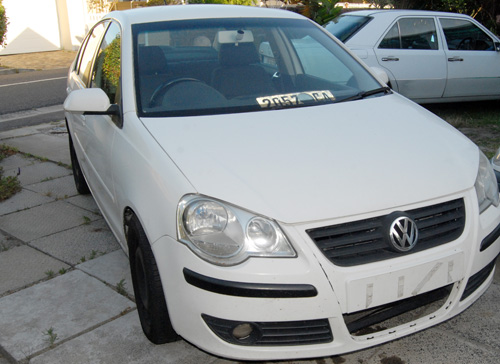ELECTRONIC POWER CONTROL EXPLAINED
As I mentioned in a previous, blog German Automotive Technology is really, really cool. German car design and automotive technology is currently at the forefront of going green, with the result that all other motor manufacturers are turning green with envy. Pardon the pun. German car design technology doesn't flaunt the colour green as eco-friendly but rather blue.Mercedes is pushing Blue Efficiency as their future technology and VW is flaunting Bluemotion as their new technology. Polo de Volkswagen Bluemotion technology started out with the 2007 Polo (not my 2007 Polo Classic) and may be seen in some of their new vehicles. It's futuristic in the sense that it saves fuel. It saves all the fuel that would have been used, if the car was allowed to idle. Blue Efficiency and Bluemotion fuel technology doesn't allow the car's engine to idle, so when you start the car, it doesn't actually idle but the dashboard lights indicate that the engine has started. Logically there is no engine noise since there are no revs. The moment the car is engaged into gear and you remove your foot from the brake pedal, the engine starts instantly and pulls away as if it has been idling all the time. Exactly the same happens when coming to a compete stop at a traffic light or stop street. The engine switches off when the car comes to a halt, and remains off whiles you foot keeps the brake pedal depressed. However, the moment the pedal is released, the engine starts and the car moves off as if the engine was never switched off. There is no delay.
Having said that, can you contemplate or just imagine the complexity of the electronics, both hardware and software employed in Bluemotion Technology, considering that many of the service agents are even stymied by the current German technology used in cars prior to 2008. The EPC on Volkswagen, Audi, Skoda, is just one of them. Central locking is another, ABS is a third and airbag a fourth. Intermittent reverse light whilst driving a fifth, brake light is on, blowing brake light fuses is a sixth and the list goes on. The repair and service charges for the non-Blue motion vehicles are already over the top so what can we expect to pay for repairs to Bluemotion technology vehicles. Besides who is going to repair them? Currently service agents are trowing spare parts at each electronic problem hoping that it would solve the problem but in most cases doesn't solve the problem.
Anyway, it appears that quite a few visitors who viewed my Electronic Power Control - EPC solution blog have no idea what a potentiometer (sender) is, so let me explain and use the VW Polo accelerator pedal [accelerator position sensor (G79 & G185)] as a basis for understanding. Below is a picture of a potentiometer marked "A" that may be used in an electronic circuit. It specific one could be used as a volume control in an amplifier, or a sensitivity control on a disco strobe or a brightness control for a lamp dimmer. The uses for potentiometers are endless and has been used in cars for quite some time.
 |
| An overview of the Electronic Power Control Circuit - EPC in Volkswagen, Audi, Skoda. |
The accelerator sender marked B and the throttle body housing marked C as seen above each have a gang potentiometer (meaning more than one potemtiometer in the same housing) VW calls these both these potentiometers senders since they provide input to the ECU - Engine control Unit. The ECU controls the Drive-by-wire and any problems with it causes the car to go into "Limp Mode" resulting in the EPC warning light or other dashboard lights to come on. Have a look at Electronic Power as to how the entire accelerator throttle circuit is controlled and interfaces with the OBD2 /OBD II and Can Bus network.


